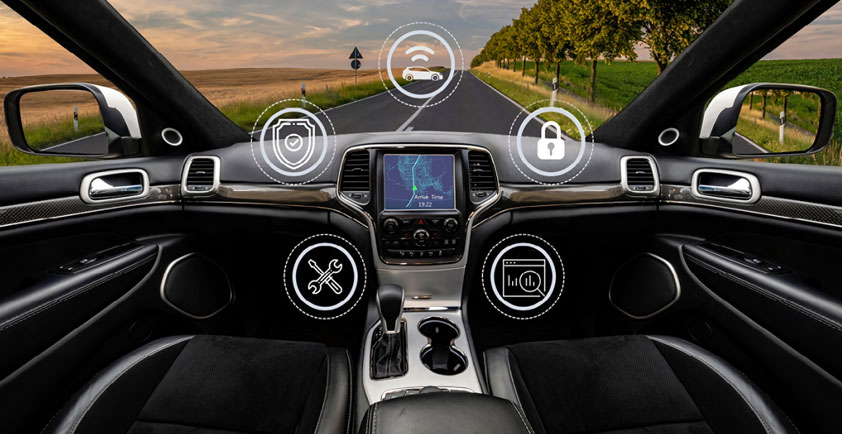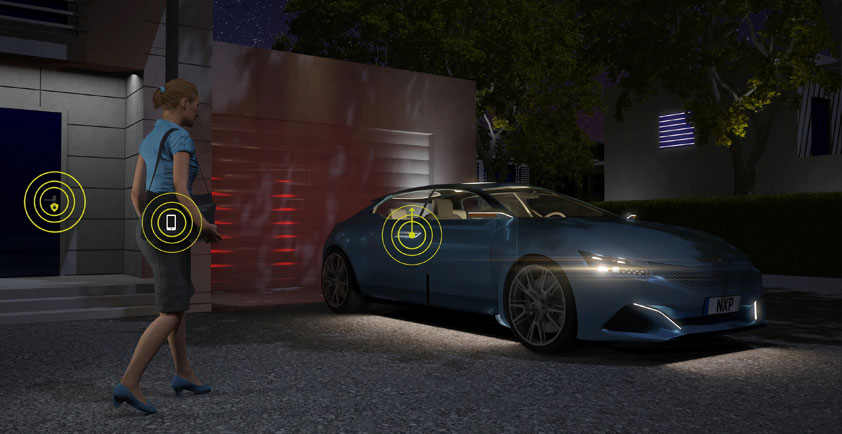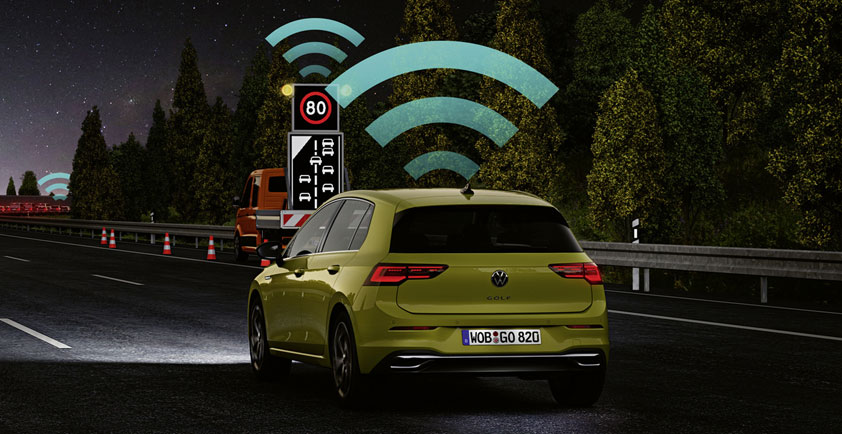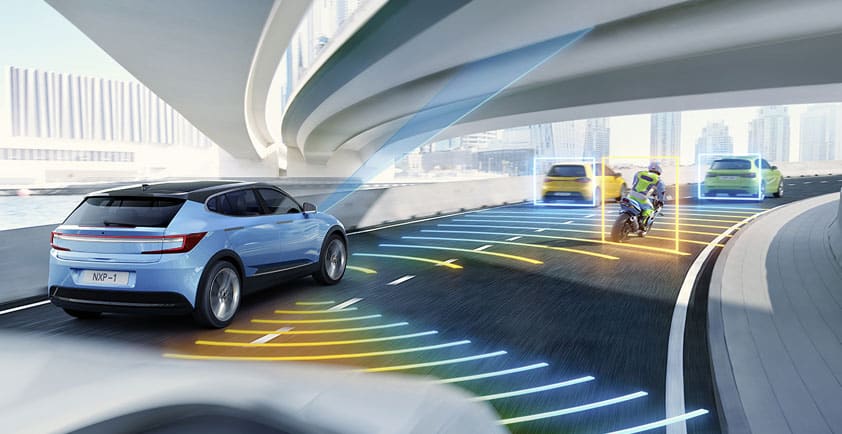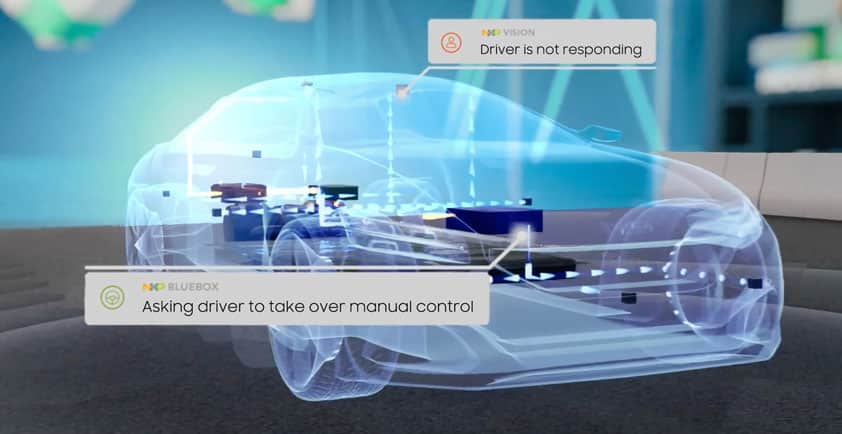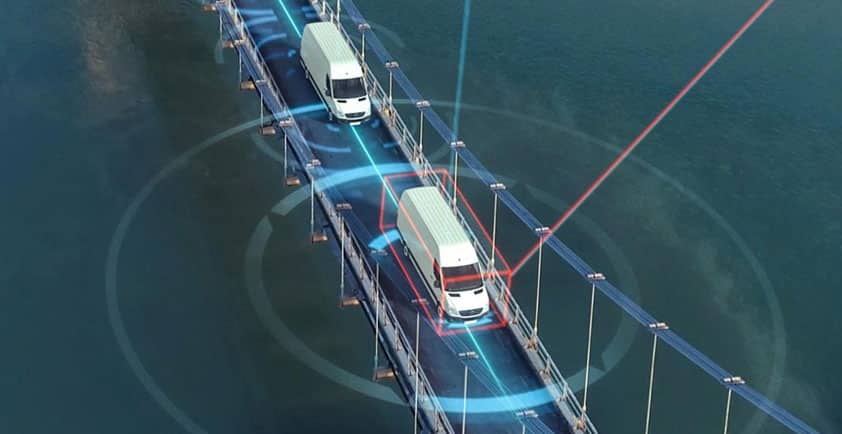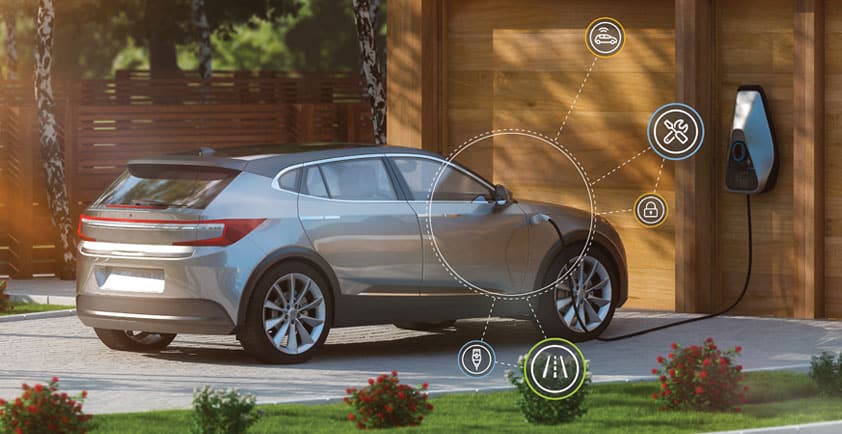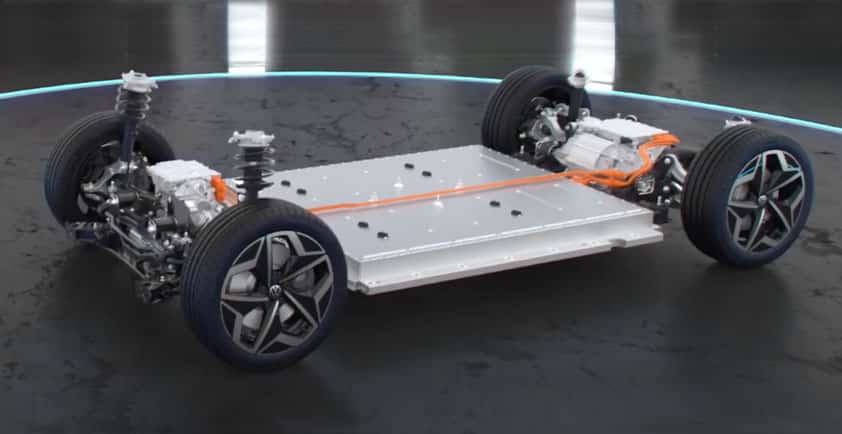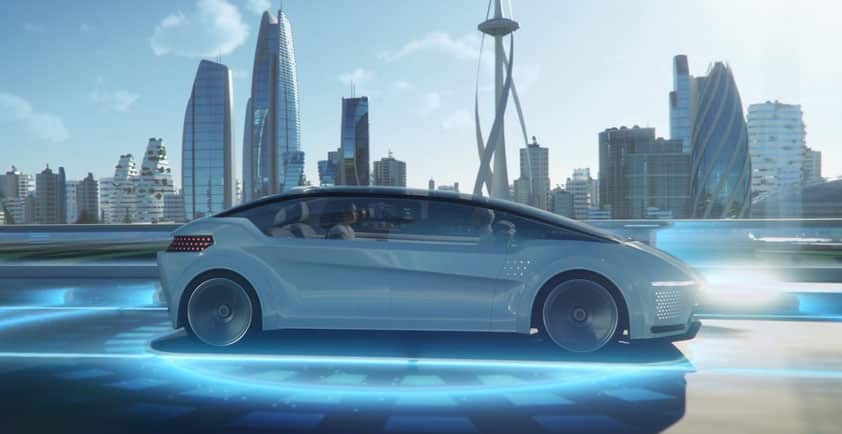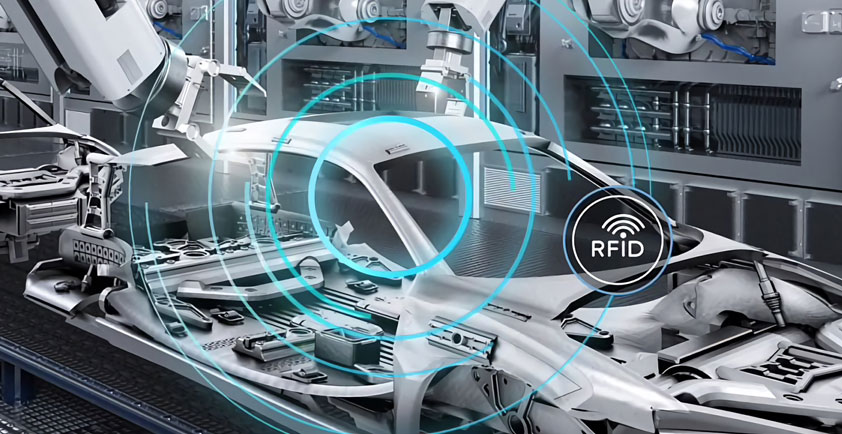
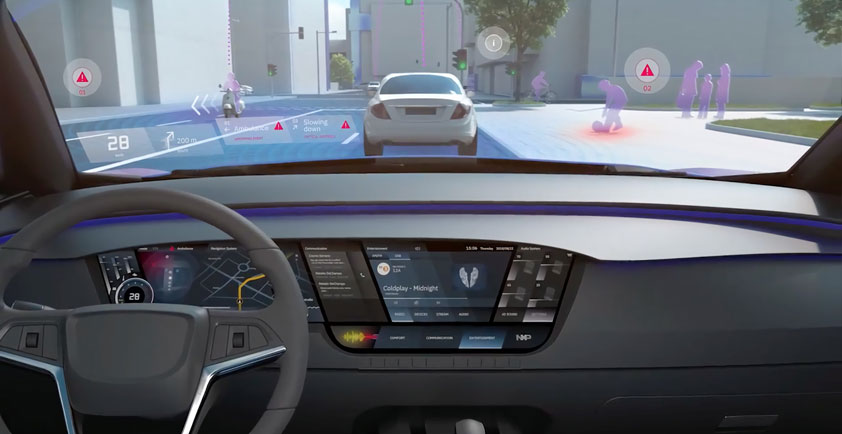
AUTOMOTIVE TREND – SUPER eCOCKPITS AND THE RISE OF STRETCH DISPLAYS
Car manufacturers are moving to utilize stretch LCDs in the automotive cockpit. The typical HD/4K TV you may have in your house is designed to fit movies and television content. There exist standards which define what a ‘stretch’ screen looks like but in general, stretch screens are very wide, often 4k or higher in width but very narrow in height. This enables the display to wrap around the entire dashboard of your car, enabling true seamless eCockpit digital experiences in vehicles.
The benefit to the car’s driver and passenger is that the stretch LCD screen offers a complete panoramic eCockpit experience that can simultaneously display driver information such as virtual speedometers, center console controls for music and environment control, and passenger data for entertainment, map, navigation and a host of other functions. In addition, the large screen real estate allows for a given function to ‘spread out’ more on the screen with additional details important to the passenger or driver rather than being restricted to a smaller screen’s real estate. This in effect can reduce the overall cost of the car as a single screen can replace multiple smaller screens and their associated wiring harnesses, power supplies and controls while providing a much more immersive experience for the car’s passengers.
While single stretch screens are unlikely to replace all screens in the car, their existence provides many more options for the car manufacturer to place digital information important to the driver. An example would be ‘smart’ side view mirrors which are themselves LCDs with cameras. With a stretch screens larger canvas, the side view mirrors can replicate what they see on the main stretch screen, reducing the number of times the driver must physically turn their head to see them outside the car. With all these benefits, stretch screens are in demand, popular and convenient but they also need to ensure safety critical functions remain in-tact and accessible to the driver.
i.MX 8QuadMax
Enter the i.MX 8QuadMax applications processor from NXP. The i.MX 8QuadMax is a highly flexible pixel ‘engine’ enabling customers to build a wide variety of infotainment screen ‘surfaces’ into their automobiles. At its heart, the i.MX 8QuadMax has two fully-independent GPU and display controller subsystems, each capable of driving 2x displays with independent content for a total of four displays. However, each display controller has also been built with the capability to drive horizontal widths greater than 4k which is often seen in stretch displays. For example, i.MX 8QuadMax could drive two independent 4500 x 720 stretch panels with a third 2048 x 1080 2K panel. The two stretch panels could either be independently mounted in the car with separate content or the car manufacturer could choose to place them side by side, mechanically ‘bonded’ to appear as a single LCD, presenting a whopping 9000 x 720 stretch panel. The driver and passengers would not realize that the single large panel is made up of two independent panels. The third panel could be mounted as a center console or perhaps used as a rear seat entertainment display.
Optimized product families for fail-safe display
The i.MX 8QuadMax is optimized for these nonstandard, panoramic resolutions from the ground up. More importantly, i.MX 8 and i.MX 8X families are designed with fail-functional display capabilities. Each display can be monitored for ‘glitches’ in screen content or outright crashes of the primary system software. In that event, a separate display path controlled by an on chip Cortex® M4 subsystem will take over and display information critical to the driver such as speed, PRDNL telltales, engine status and gas remaining until the problem can be fixed.
Which brings me to our CES 2020 super eCockpit demonstrations. At CES 2019 we showcased the power of i.MX 8QuadMax in a beautiful 3D printed concept dashboard implementing 2 curved, 1 stretch screen and a 4th driver monitoring system. For CES 2020 we are going further by showcasing what multiple i.MX 8QuadMax’s can do and driving a total of 11 displays!
This year we will showcase the dashboard from 2019 with all new content from Altia optimized for dual i.MX 8Quadmax systems. The dashboard will also include Transparent EL Displays from Lumineq: an aftermarket Ford F-150 windshield featuring a three-gauge In Glass Laminated Display along with an interior Heads Up Display. The Super eCockpit will also include ‘smart’ rear view mirror, and sideview mirrors which are LCDs with cameras that react to the content on the main displays. Finally a concept for a wireless charging dock utilizing NXP wireless charging technologies embedded next to a large touchscreen for control of the vehicle, all driven by i.MX 8QuadMax.
Production ready full driver monitoring systems from Xperi and Allgo Systems will showcase the power and accuracy of i.MX 8QuadMax allowing you to see it track your eyes, face direction, and emotions you are exhibiting! Finally a second Stretch screen display will showcase content utilizing Unity for both a beautiful infotainment system as well as embedding a Unity game you can play. Well, other than sleeping or catching up on work, what else are you going to do in a self-driving car to keep busy? Play games!
Great hardware requires great software
At the end of the day, great hardware requires great software to make the user experience one to remember. Which brings me to our recent announcement with Unity Technologies enabling development of Human Machine Interface for high fidelity, immersive infotainment systems running on i.MX 8 utilizing Unity’s powerful 3D content creation and rendering engines as well as our recent webinar with Altia, “Automotive Cockpits of the future: Single Processor, Several Displays” showcasing how to use Altia’s tools with i.MX 8 to create beautiful automotive user interfaces efficiently.
Companies like Unity and Altia bring optimized content rendering engines, content creation and toolchains which can be utilized to work with stretch screens and ‘normal’ resolution screens alike. The output of these powerful engines are stunning display experiences that have to be seen. Coupled with i.MX 8QuadMax’s performance and fail-functional display safety capabilities provide the consumer with a seamless, beautiful and safe experience. Didn’t make it to CES? Watch a video of the Super eCockpits here and reach out if you’d like to talk further!
Author: Kyle Fox - NXP Director for the i.MX 8 series applications processor
